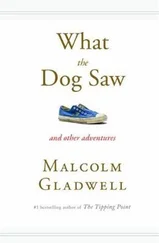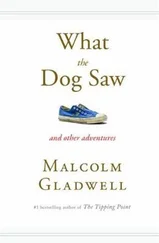Malcolm Gladwell - The Tipping Point
Здесь есть возможность читать онлайн «Malcolm Gladwell - The Tipping Point» весь текст электронной книги совершенно бесплатно (целиком полную версию без сокращений). В некоторых случаях можно слушать аудио, скачать через торрент в формате fb2 и присутствует краткое содержание. Город: Boston, New York, London, Год выпуска: 2000, ISBN: 2000, Издательство: LITTLE, BROWN AND COMPANY, Жанр: Культурология, Психология, на английском языке. Описание произведения, (предисловие) а так же отзывы посетителей доступны на портале библиотеки ЛибКат.
- Название:The Tipping Point
- Автор:
- Издательство:LITTLE, BROWN AND COMPANY
- Жанр:
- Год:2000
- Город:Boston, New York, London
- ISBN:0-316-31696-2
- Рейтинг книги:3 / 5. Голосов: 1
-
Избранное:Добавить в избранное
- Отзывы:
-
Ваша оценка:
- 60
- 1
- 2
- 3
- 4
- 5
The Tipping Point: краткое содержание, описание и аннотация
Предлагаем к чтению аннотацию, описание, краткое содержание или предисловие (зависит от того, что написал сам автор книги «The Tipping Point»). Если вы не нашли необходимую информацию о книге — напишите в комментариях, мы постараемся отыскать её.
The Tipping Point — читать онлайн бесплатно полную книгу (весь текст) целиком
Ниже представлен текст книги, разбитый по страницам. Система сохранения места последней прочитанной страницы, позволяет с удобством читать онлайн бесплатно книгу «The Tipping Point», без необходимости каждый раз заново искать на чём Вы остановились. Поставьте закладку, и сможете в любой момент перейти на страницу, на которой закончили чтение.
Интервал:
Закладка:
The key to getting people to change their behavior, in other words, to care about their neighbor in distress, sometimes lies with the smallest details of their immediate situation. The Power of Context says that human beings are a lot more sensitive to their environment than they may seem.
The three rules of the Tipping Point — the Law of the Few, the Stickiness Factor, the Power of Context — offer a way of making sense of epidemics. They provide us with direction for how to go about reaching a Tipping Point. The balance of this book will take these ideas and apply them to other puzzling situations and epidemics from the world around us. How do these three rules help us understand teenage smoking, for example, or the phenomenon of word of mouth, or crime, or the rise of a bestseller? The answers may surprise you.
TWO
The Law of the Few
CONNECTORS, MAVENS, AND SALESMEN
On the afternoon of April 18, 1775, a young boy who worked at a livery stable in Boston overheard one British army officer say to another something about "hell to pay tomorrow." The stable boy ran with the news to Boston's North End to the home of a silversmith named Paul Revere. Revere listened gravely; this was not the first rumor to come his way that day. Earlier, he had been told of an unusual number of British officers gathered on Boston's Long Wharf, talking in low tones. British crewmen had been spotted scurrying about in the boats tethered beneath the HMS Somerset and the HMS Hoyne in Boston Harbor. Several other sailors were seen on shore that morning, running what appeared to be last-minute errands. As the afternoon wore on Revere and his close friend Joseph Warren became more and more convinced that the British were about to make the major move that had long been rumored — to march to the town of Lexington, northwest of Boston, to arrest the colonial leaders John Hancock and Samuel Adams, and then on to the town of Concord to seize the stores of guns and ammunition that some of the local colonial militia had stored there.
What happened next has become part of historical legend, a tale told to every American schoolchild. At ten o'clock that night, Warren and Revere met. They decided they had to warn the communities surrounding Boston that the British were on their way, so that local militia could be roused to meet them. Revere was spirited across Boston Harbor to the ferry landing at Charlestown. He jumped on a horse and began his "midnight ride" to Lexington. In two hours, he covered thirteen miles. In every town he passed through along the way — Charlestown, Medford, North Cambridge, Menotomy — he knocked on doors and spread the word, telling local colonial leaders of the oncoming British, and telling them to spread the word to others. Church hells started ringing. Drums started beating. The news spread like a virus as those informed by Paul Revere sent out riders of their own, until alarms were going off throughout the entire region. The word was in Lincoln, Massachusetts, by one A.M., in Sudbury by three, in Andover, forty miles northwest of Boston, by five A.M., and by nine in the morning had reached as far west as Ashby, near Worcester. When the British finally began their march toward Lexington on the morning of the nineteenth, their foray into the countryside was met — to their utter astonishment — with organized and fierce resistance. In Concord that day, the British were confronted and soundly beaten by the colonial militia, and from that exchange came the war known as the American Revolution.
Paul Revere's ride is perhaps the most famous historical example of a word-of-mouth epidemic. A piece of extraordinary news traveled a long distance in a very short time, mobilizing an entire region to arms. Not all word-of-mouth epidemics are this sensational, of course. But it is safe to say that word of mouth is — even in this age of mass communications and multimillion-dollar advertising campaigns — still the most important form of human communication. Think, for a moment, about the last expensive restaurant you went to, the last expensive piece of clothing you bought, and the last movie you saw. In how many of those cases was your decision about where to spend your money heavily influenced by the recommendation of a friend? There are plenty of advertising executives who think that precisely because of the sheer ubiquity of marketing efforts these days, word-of-mouth appeals have become the only kind of persuasion that most of us respond to anymore.
But for all that, word of mouth remains very mysterious. People pass on all kinds of information to each other all the time. But it's only in the rare instance that such an exchange ignites a word-of-mouth epidemic. There is a small restaurant in my neighborhood that I love and that I've been celling my friends about for six months. But it's still half empty. My endorsement clearly isn't enough to start a word-of-mouth epidemic, yet there are restaurants that to my mind aren't any better than the one in my neighborhood that open and within a matter of weeks are turning customers away. Why is it that some ideas and trends and messages "tip" and others don't?
In the case of Paul Revere's ride, the answer to this seems easy. Revere was carrying a sensational piece of news: the British were coming. But if you look closely at the events of that evening, that explanation doesn't solve the riddle either. At the same time that Revere began his ride north and west of Boston, a fellow revolutionary — a tanner by the name of William Dawes — set out on the same urgent errand, working his way to Lexington via the towns west of Boston. He was carrying the identical message, through just as many towns over just as many miles as Paul Revere. But Dawes's ride didn't set the countryside afire. The local militia leaders weren't alerted. In fact, so few men from one of the main towns he rode through — Wallham — fought the following day that some subsequent historians concluded that it must have been a strongly pro-British community. It wasn't. The people of Waltham just didn't find out the British were coming until it was too late. If it were only the news itself that mattered in a word-of-mouth epidemic, Dawes would now be as famous as Paul Revere. He isn't. So why did Revere succeed where Dawes failed?
The answer is that the success of any kind of social epidemic is heavily dependent on the involvement of people with a particular and rare set of social gifts. Revere's news tipped and Dawes's didn't because of the differences between the two men. This is the Law of the Few, which I briefly outlined in the previous chapter. But there I only gave examples of the kinds of people — highly promiscuous, sexually predatory — who are critical to epidemics of sexually transmitted disease. This chapter is about the people critical to social epidemics and what makes someone like Paul Revere different from someone like William Dawes. These kinds of people are all around us. Yet we often fail to give them proper credit for the role they play in our lives. I call them Connectors, Mavens, and Salesmen.
In the late 1960s, the psychologist Stanley Milgram conducted an experiment to find an answer to what is known as the small-world problem. The problem is this: how are human beings connected? Do we all belong to separate worlds, operating simultaneously but autonomously, so that the links between any two people, anywhere in the world, are few and distant? Or are we all bound up together in a grand, interlocking web? In a way, Milgram was asking the very same kind of question that began this chapter, namely, how docs and idea or a trend or a piece of news — the British are coming! — travel through a population?
Milgram's idea was to test this question with a chain letter. He got the names of 160 people who lived in Omaha, Nebraska, and mailed each of them a packet. In the packet was the name and address of a stockbroker who worked in Boston and lived in Sharon, Massachusetts. Each person was instructed to write his or her name on the packet and send it on to a friend or acquaintance who he or she thought would get the packet closer to the stockbroker. If you lived in Omaha and had a cousin outside of Boston, for example, you might send it to him, on the grounds that — even if your cousin did not himself know the stockbroker — he would be a lot more likely to be able to get to the stockbroker in two or three or four steps. The idea was that when the packet finally arrived at the stockbroker's house, Milgram could look at the list of all those whose hands it went through to get there and establish how closely connected someone chosen at random from one part of the country was to another person in another part of the country. Milgram found that most of the letters reached the stockbroker in five or six steps. This experiment is where we get the concept of six degrees of separation.
Читать дальшеИнтервал:
Закладка:
Похожие книги на «The Tipping Point»
Представляем Вашему вниманию похожие книги на «The Tipping Point» списком для выбора. Мы отобрали схожую по названию и смыслу литературу в надежде предоставить читателям больше вариантов отыскать новые, интересные, ещё непрочитанные произведения.
Обсуждение, отзывы о книге «The Tipping Point» и просто собственные мнения читателей. Оставьте ваши комментарии, напишите, что Вы думаете о произведении, его смысле или главных героях. Укажите что конкретно понравилось, а что нет, и почему Вы так считаете.










